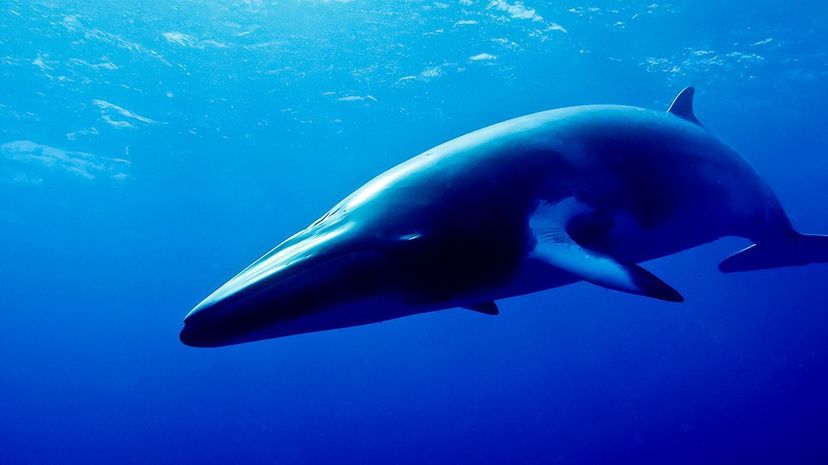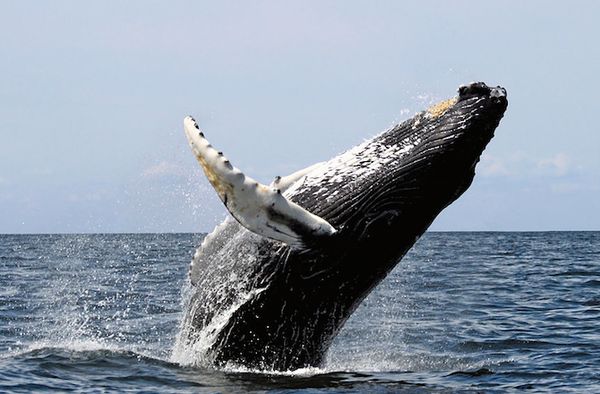
The Western Pacific Biotwang sounds like some funky accent, but it's actually the moniker of anewly discovered whale call. The source of the five-part, preternatural call, which ranges from a low moan to a screechy, metallic tone, has puzzled researchers since it was first recorded in 2014. Now, scientists believe minke whales are responsible for the sound.
The twangy whale call is described in apaperrecently published in the Journal of the Acoustical Society of America. Marine researchers from Cornell and Oregon State universities recorded the call via passive acoustic ocean gliders (autonomous vehicles that monitor underwater sounds) in the deepest part of the Pacific Ocean, a swath east of Guam and near theMariana Trench. The call lasts 2.5 to 3.5 seconds and ranges in frequency from 38 to 8,000 hertz (cycles per second). Minke whales are likely producing the unique call, the researchers say in the paper, because it's reminiscent ofthe "Star Wars" soundmade by dwarf minke whales in theGreat Barrier Reef.
Advertisement
Minke whales are the smallest species ofbaleen whale, which snag their food by filtering krill and small fish from the water through baleen plates in their mouths. Baleen whales produce regionally specific sounds and mainly call during the winter, often in relation to mating. But the Western Pacific Biotwang was recorded regularly in the fall of 2014 and the spring of 2015, indicating it's not used for a specific purpose, such as breeding.
The next task for the marine researchers is to find out how often the whales call during the summer versus the winter, and whether this call occurs in other locales. If it's widespread, the Western Pacific Biotwang may be in for a name change.
Advertisement





